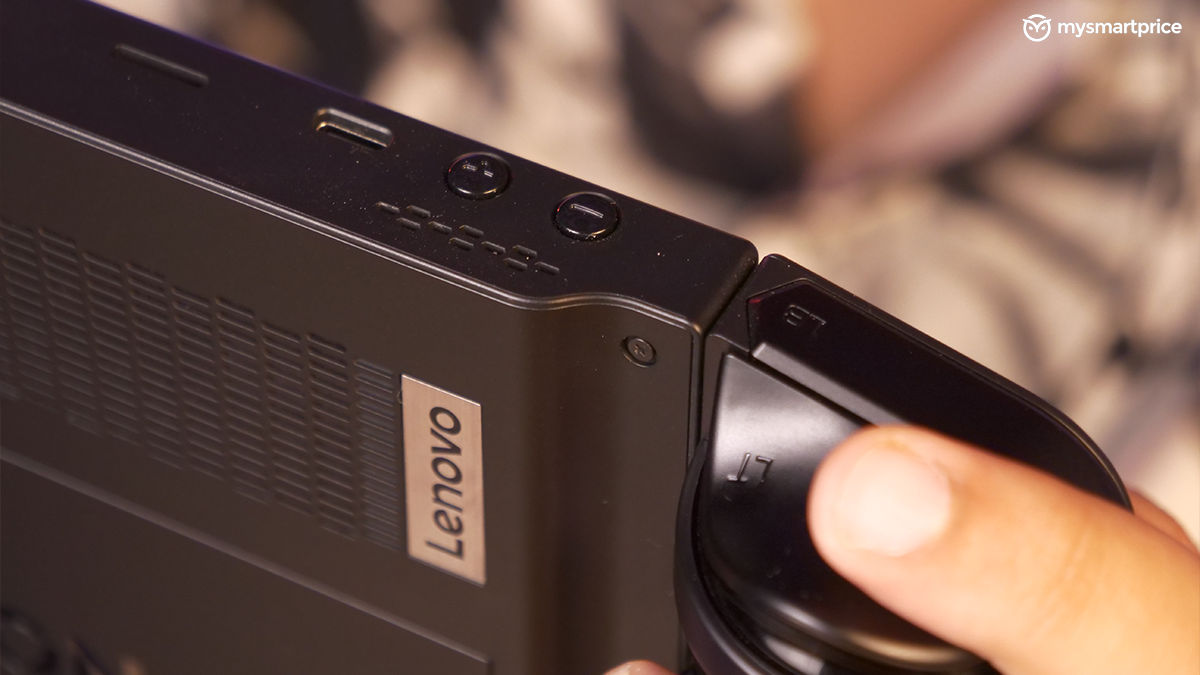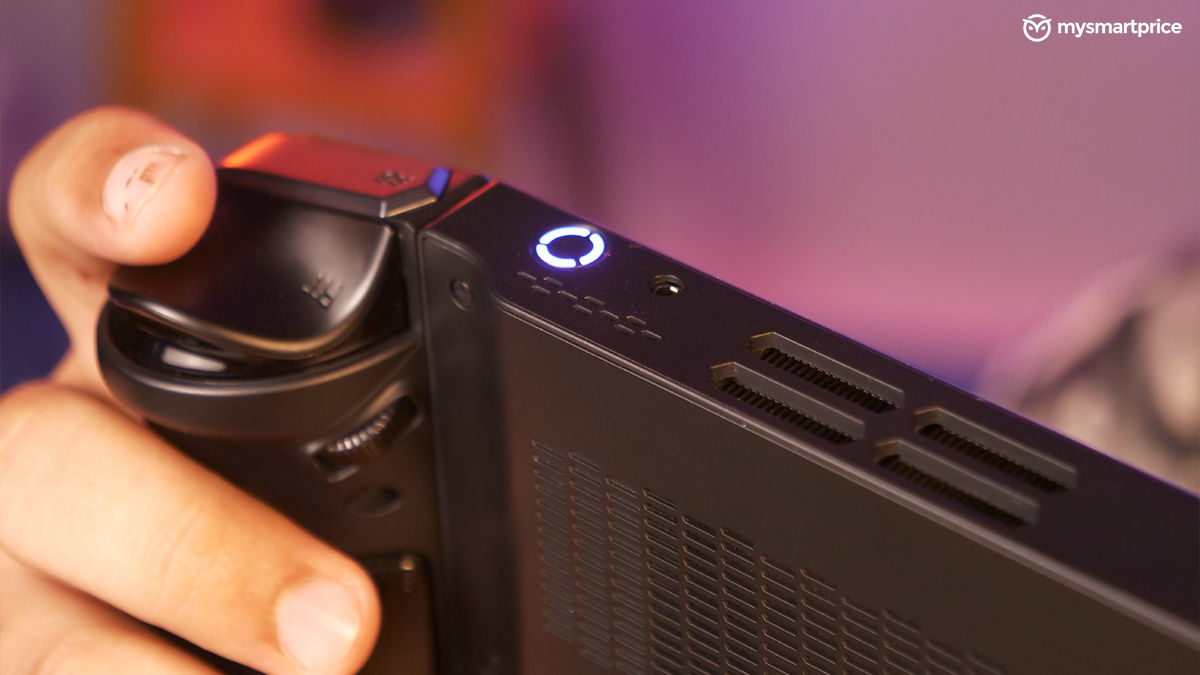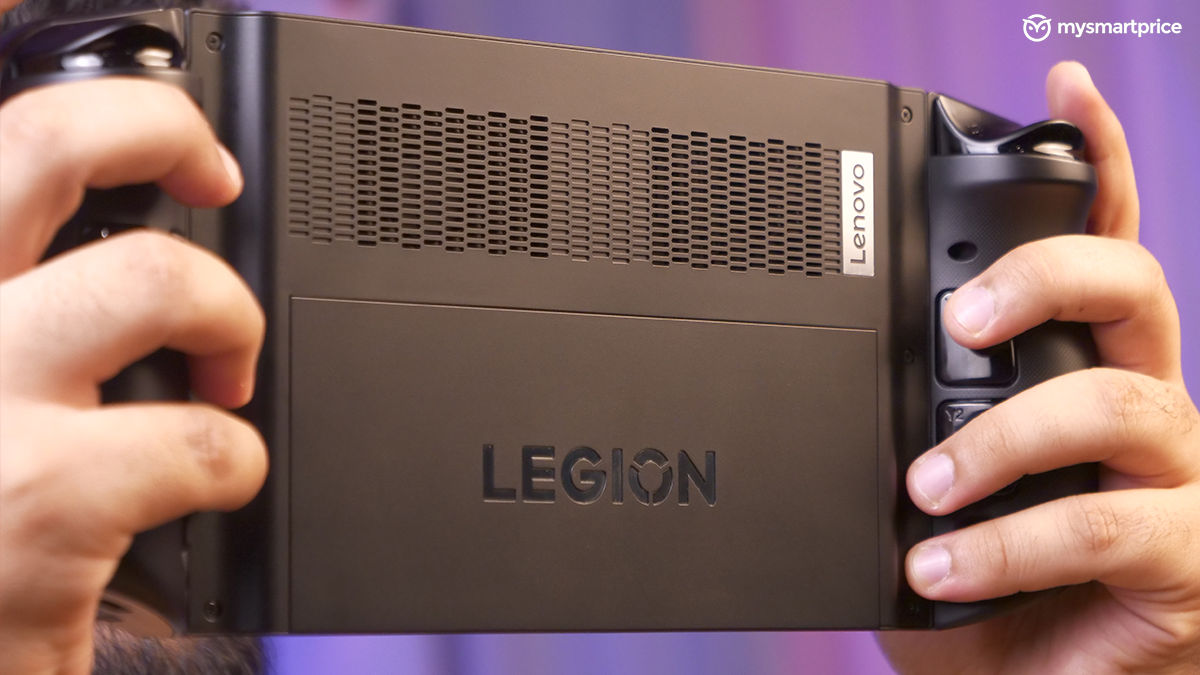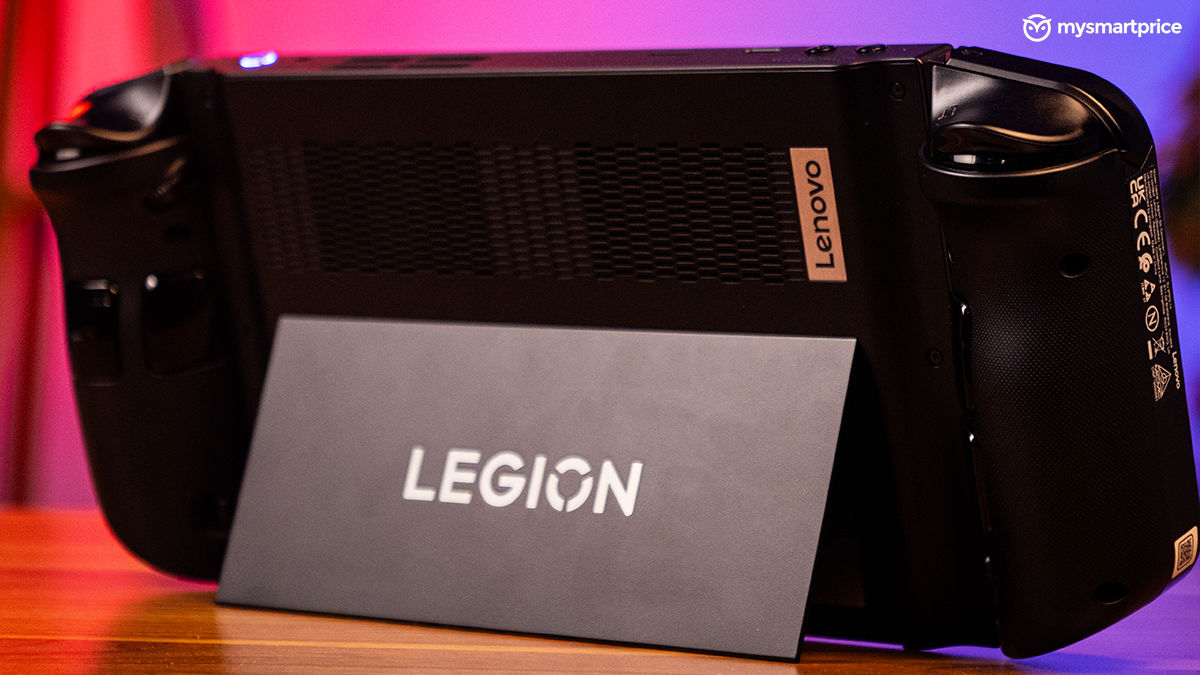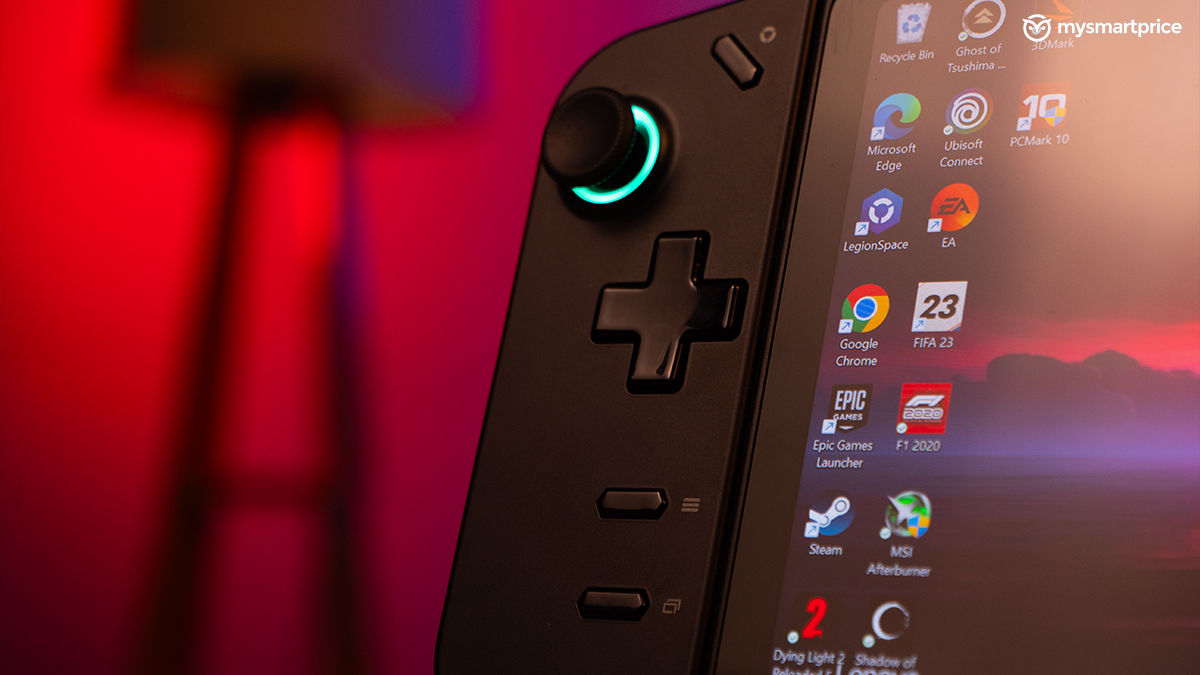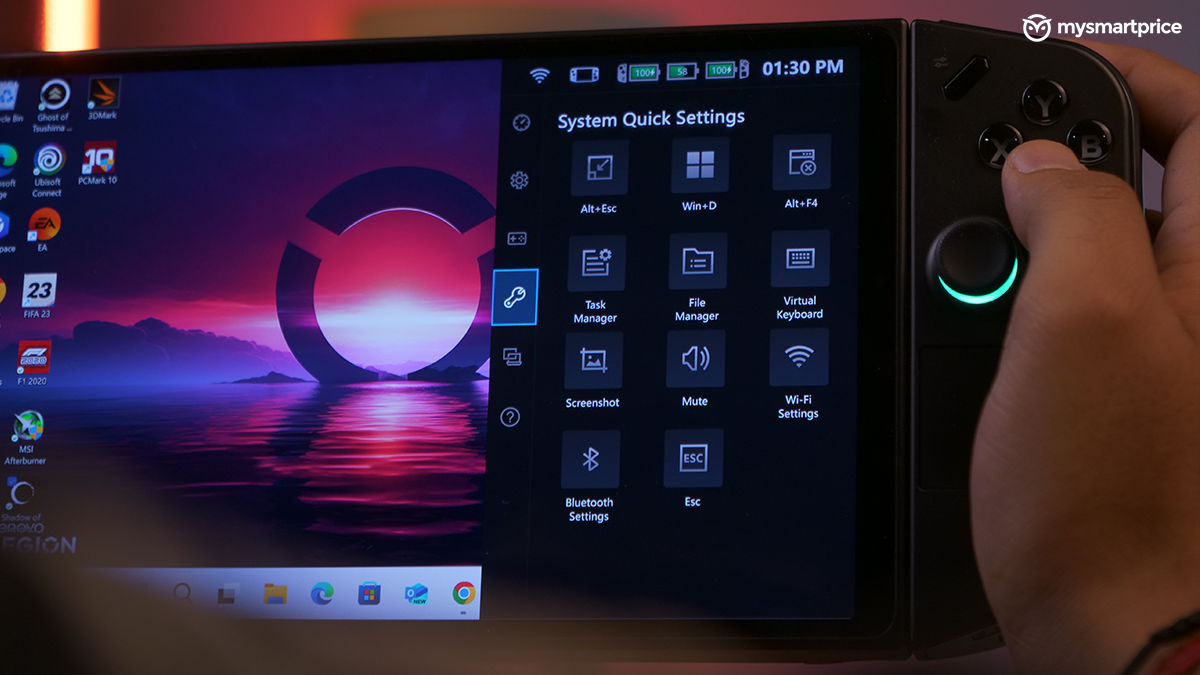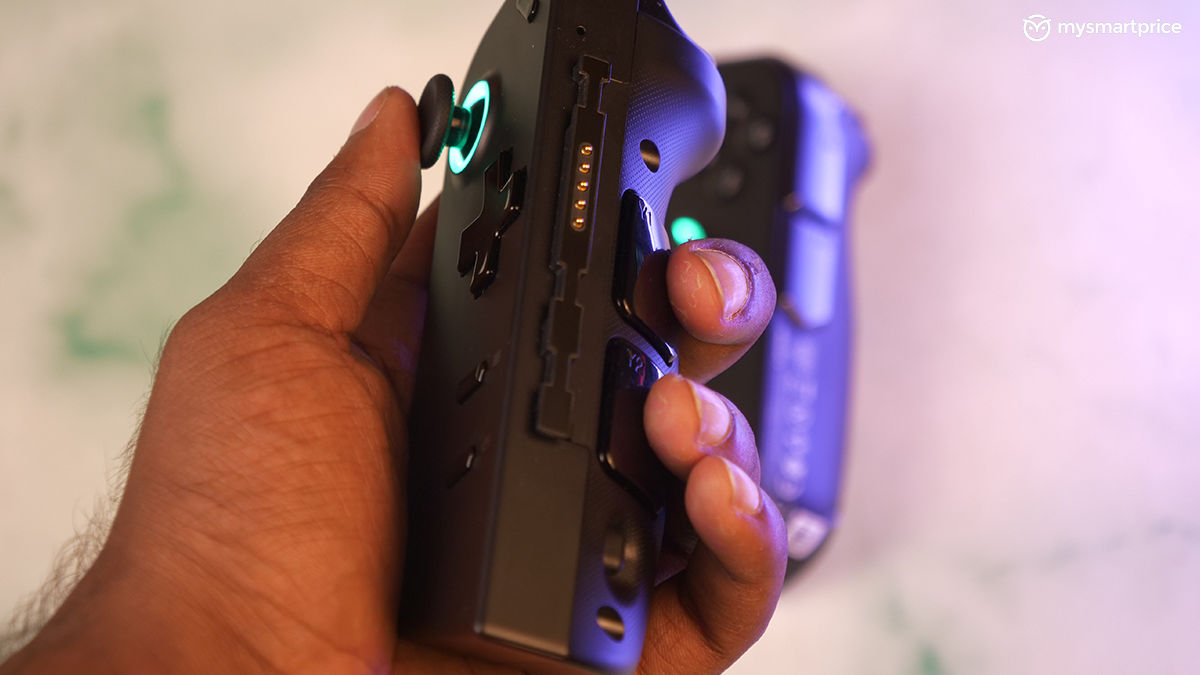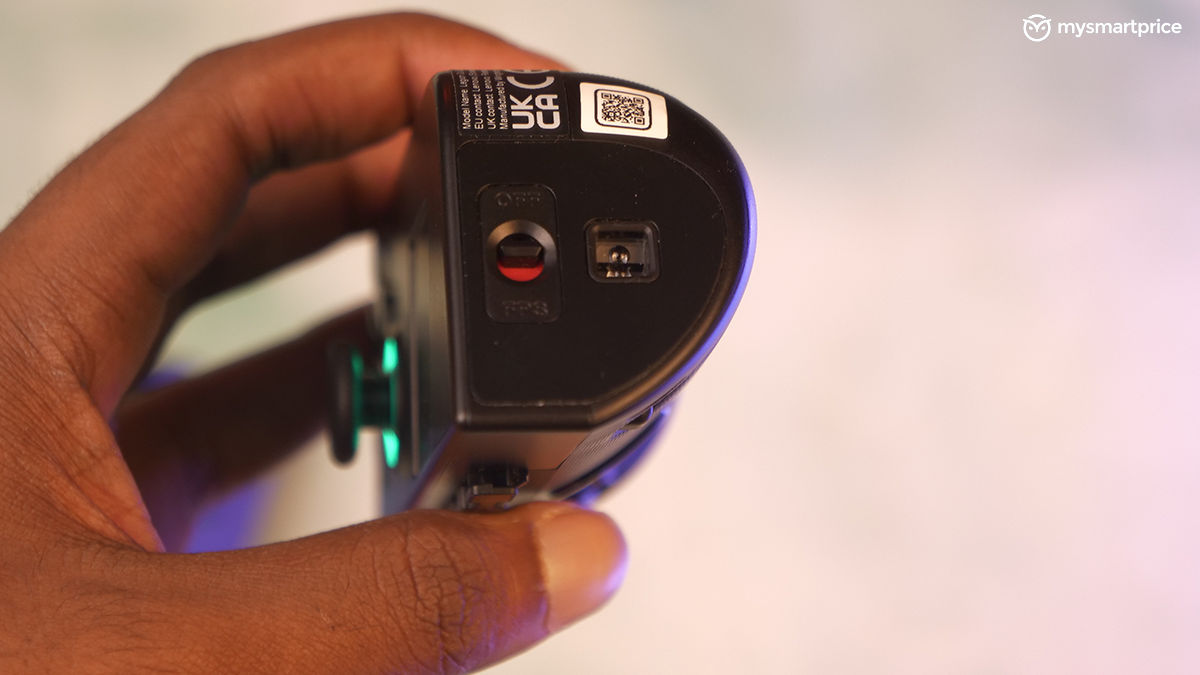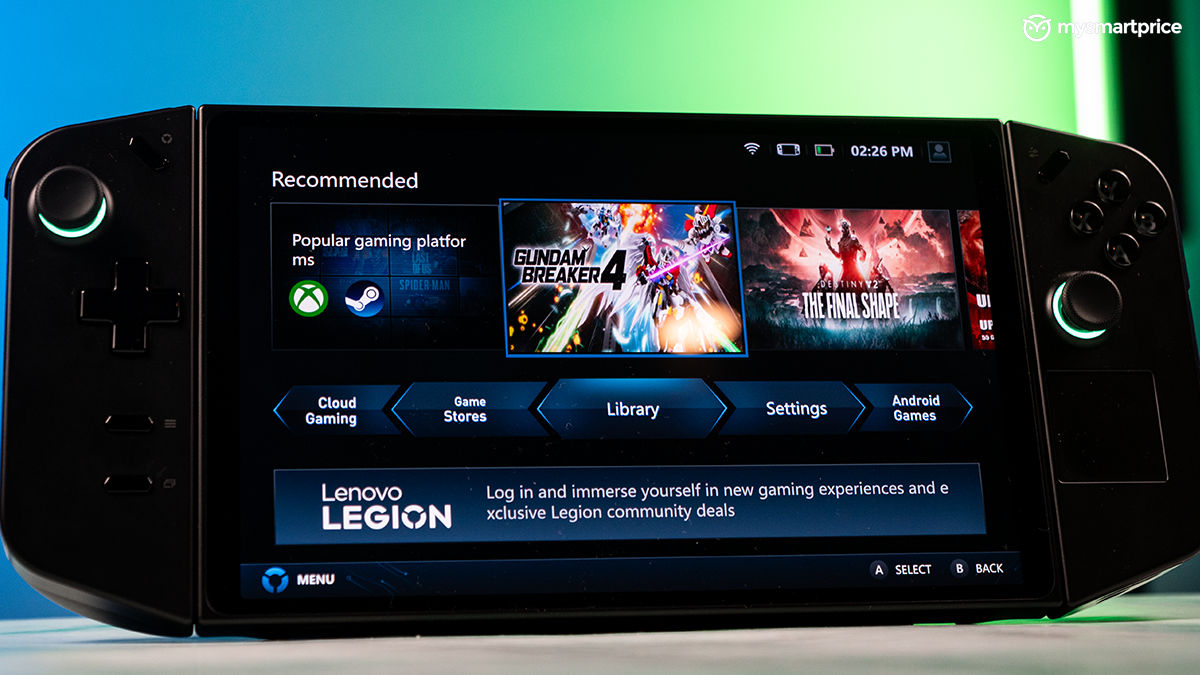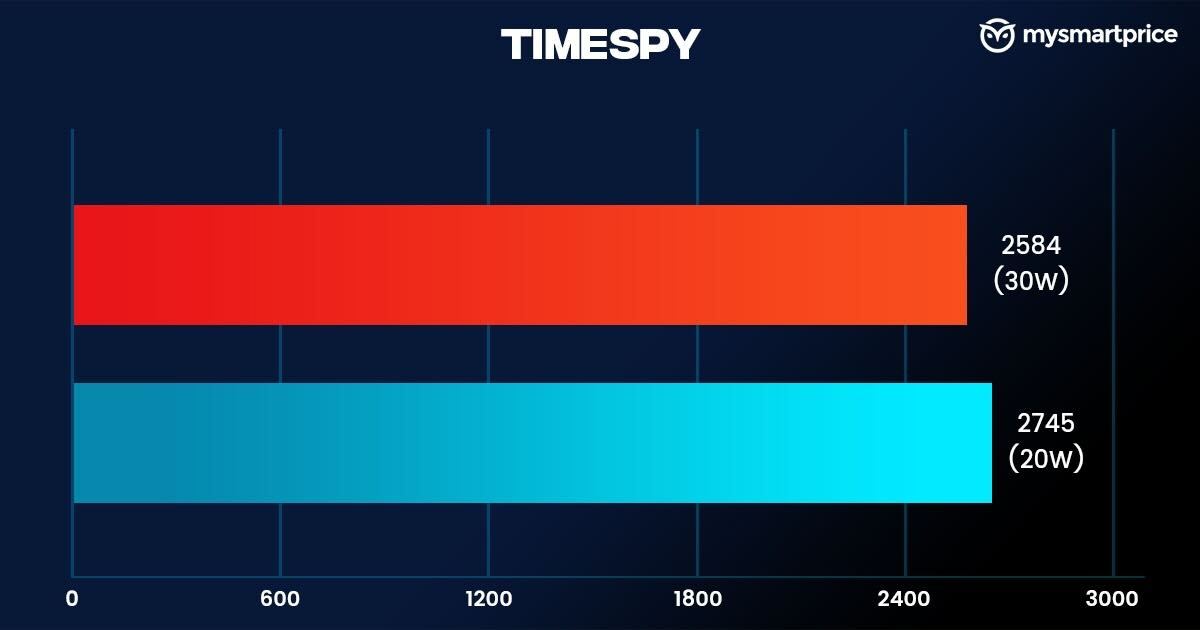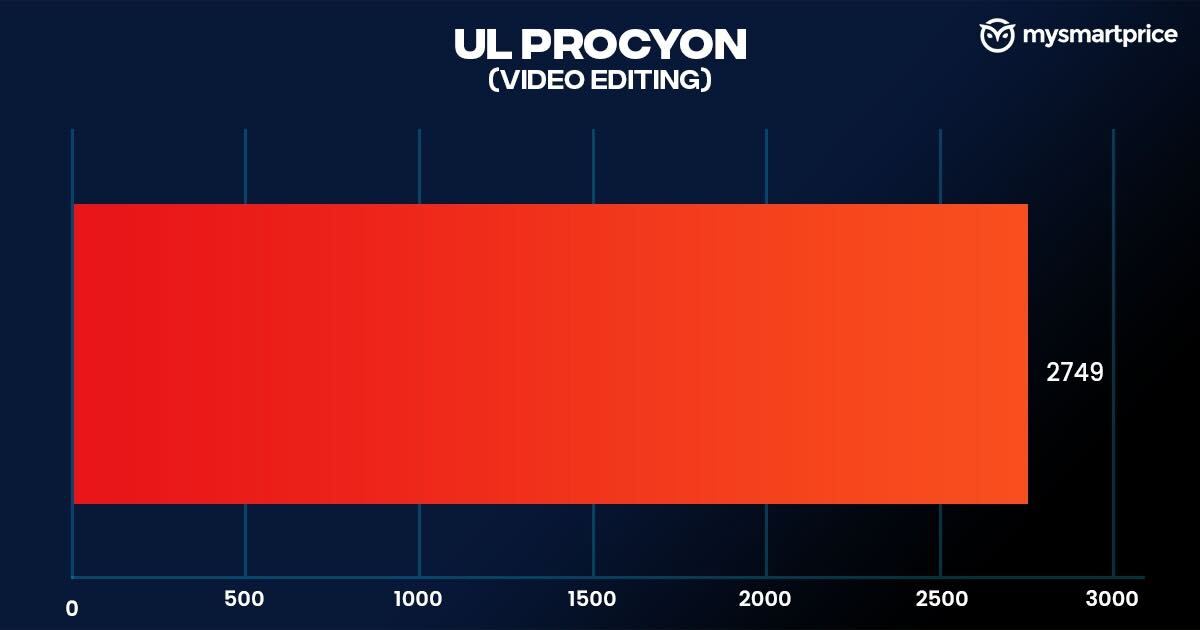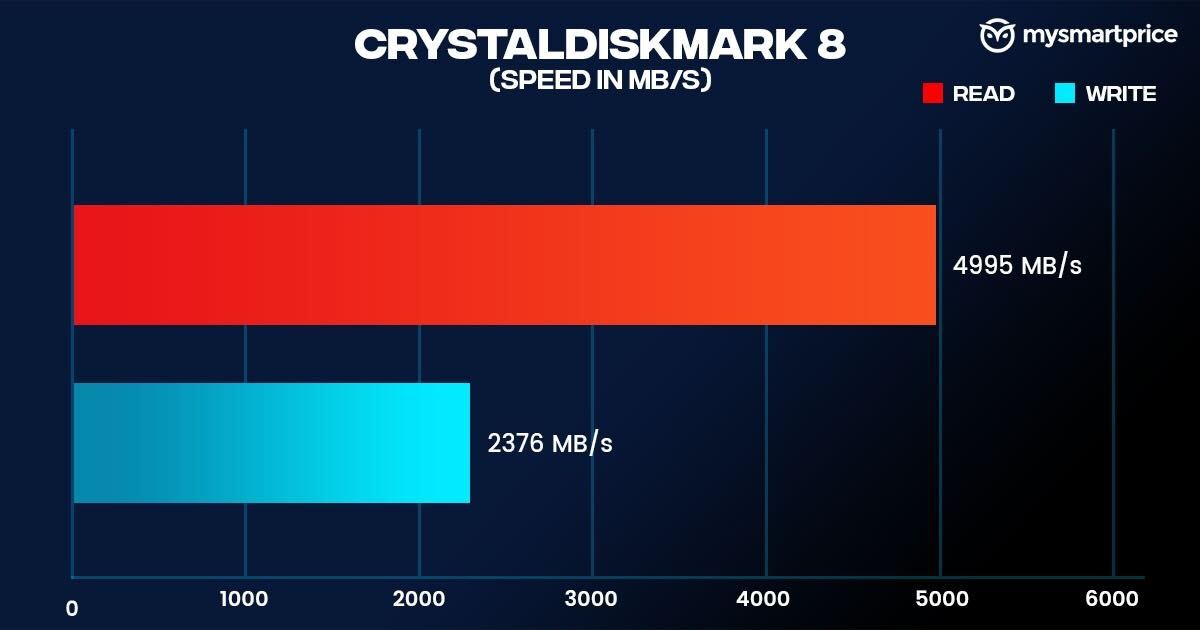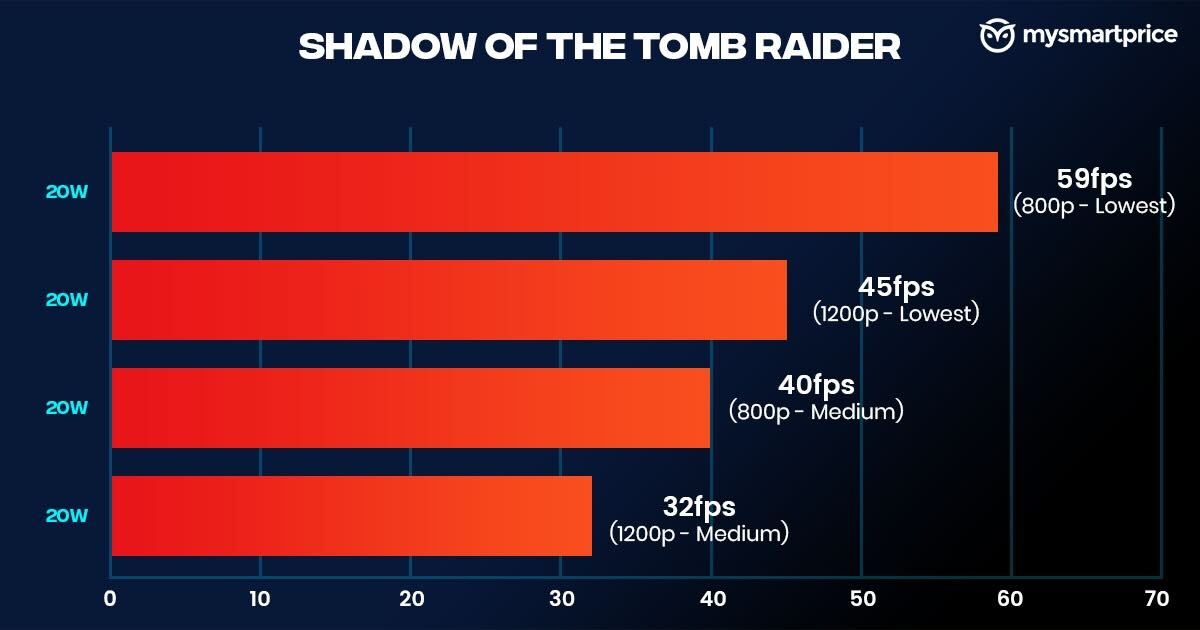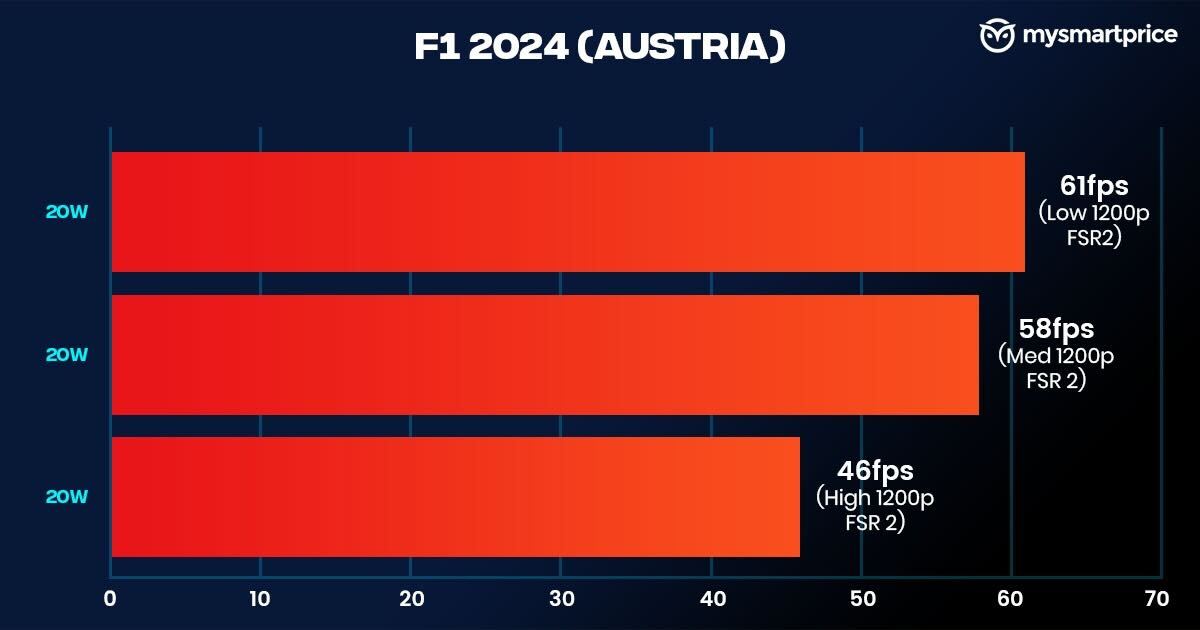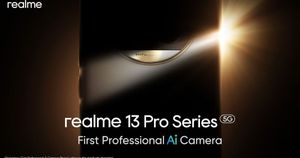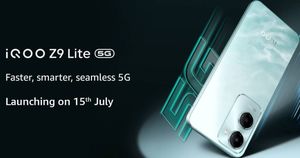
The Lenovo Legion Go is not your run-of-the-mill handheld PC. What sets it apart from the current competition in the market is its ability to function as a handheld device while also catering to your needs as a laptop. It does so by offering detachable joysticks, one of which works as a mouse. It can do everything the Asus ROG Ally can, but better — like a Frankenstein version of the traditional handheld device.
Lenovo Legion Go
Rs 89,990What Is Good?
- Crisp, big, fast display
- Detachable and ergonomic controllers
- Trackpad and scroll wheel make life with Windows easier
- Great performance
- Good connectivity options
- Useful kickstand
- Excellent cooling
What Is Bad?
- Huge, tough to carry around
- Legion Space needs some refinements
- Poor battery life
- Pricey
The AMD Ryzen Z1 Extreme still sits at the heart, but Lenovo has included superior specs that give it an edge over the current competition. But it’s not a perfect device with a few underlying issues. For Rs 89,990, the Legion Go is on the costlier side of the spectrum, especially when you compare it to the current price of the Asus ROG Ally. So, is it worth the huge price gap? Let’s find out in my review.
Lenovo Legion Go Review: Pricing and Availability in India
The Lenovo Legion Go will be available in India starting July 1 for Rs 89,990. It has a single storage variant with a 1TB M.2 2242 SSD.
Lenovo Legion Go Review: Design and Ergonomics
Let’s start by addressing the elephant in the room. The Legion Go is big and bulky, something unusual in this space. This is partially due to the giant screen on the front. It is basically a monitor fitted between two controllers. While the design is ergonomically sane, its overall weight makes it unwieldy to hold for longer hours. With the controllers attached, the entire thing weighs 246 grams more than the ROG Ally. It’s not a big task to carry around in your backpack, though, thanks to the included case, which is an excellent addition. 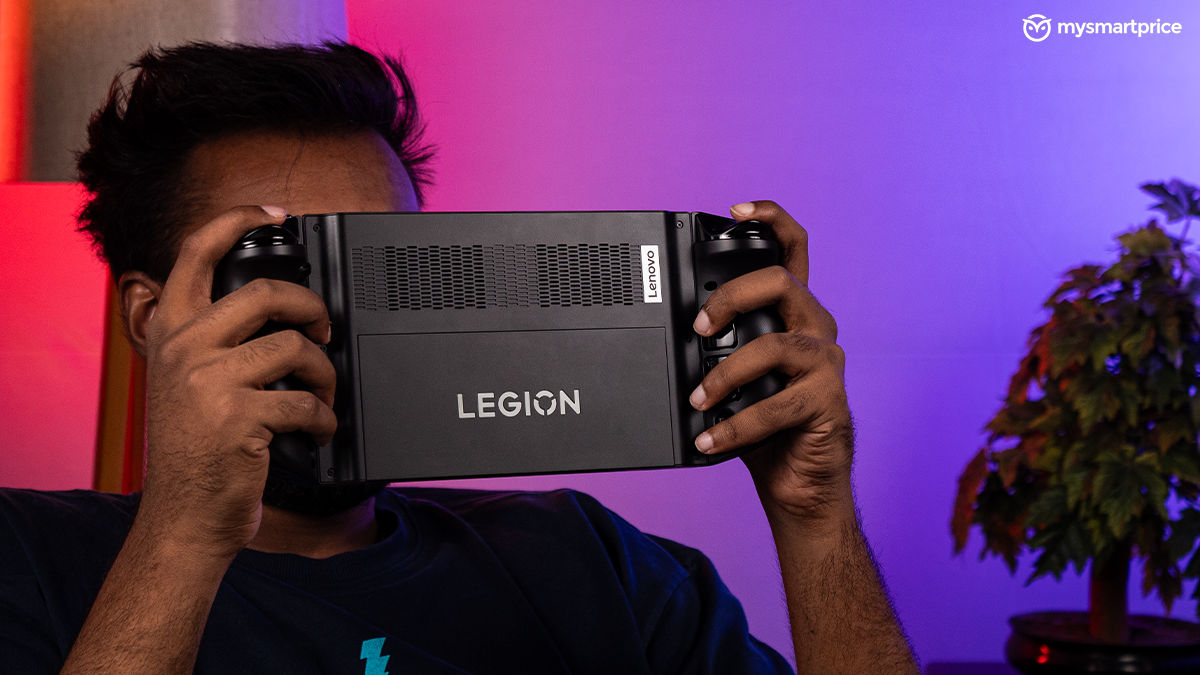
The Legion Go is made of good quality materials, so there’s no apparent flex even when you are rage quitting after consecutive humiliating losses. The controllers have a good grip at the rear, so the handheld won’t be slipping from your hands after an intense gaming session in Delhi’s heat. It’s only available in a single black colour, which is good, unlike the white colourway on the ROG Ally, which was susceptible to dirt.
| Design | Specs |
| Dimensions | 298.83 x 131 x 40.7 mm (11.76 x 5.16 x 1.60 inches) |
| Weight | 854 grams |
| Colour | Shadow Black |
| Ports | 1x microSD card reader
1x audio jack (3.5mm) 2x Pogo pin connector (5-point) 2x USB4 40Gbps (support data transfer, Power Delivery 3.0, and DisplayPortTM 1.4) |
Lenovo has gone the distance to make Windows a slightly better experience with the help of hardware. The joysticks are surrounded by RGB lighting, adding to the overall flair. While you get the usual set of buttons here, what sets the Legion Go apart is the inclusion of a tiny trackpad on the right joystick. This better navigates the painful experience of Windows on a touch-enabled device. It acts like any other trackpad you’d find on a laptop and works flawlessly.

The placement has also been executed immaculately, making it easier for your thumb to rest on it directly. Speaking of making navigation easier, the right controller also has a scroll wheel at the back — I hope whoever at Lenovo came up with this idea never gets an elaichi in their biryani.
The dedicated volume buttons on the top provide good tactile feedback, while the power button is decorated around an RGB ring. Two USB-C ports can be used simultaneously for charging or connecting an external display. The Legion Go also comes with a kickstand at the back, which helps your wrists sigh in relief. This is useful when relaxing and playing using the detachable joysticks.
The Legion Go looks intimidating, but the overall design of the handheld is well-executed, keeping practicality in mind.
TrueStrike Controllers
This is Lenovo’s quirky take on Nintendo Switch’s Joycons. While both the controllers are detachable, the process is not that swift. It requires a bit more force than I would like to inflict. That said, this was a really fun and needed feature. It allows you to set the Legion Go on a kickstand and relax on a couch while playing F1 2024 or EA Sports FC 24.
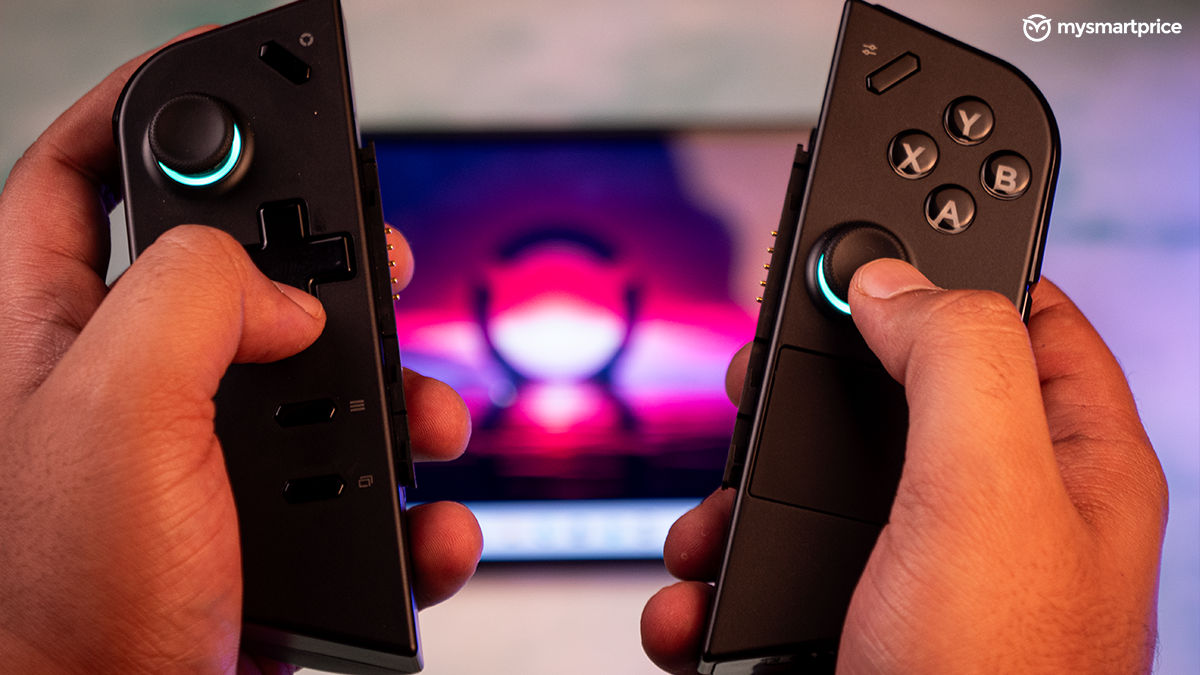
The right controller also has a simple toggle underneath that allows you to use it as a mouse. You also get a stand inside the box, which helps with this process. This further adds to Lenovo’s aim of making Windows navigation easier. While it’s neatly executed, gaming on it was a challenge. Despite that, I managed to last a few rounds on Counter Strike 2.
The left controller has two macro buttons placed vertically, while the right joystick has two more, which are placed horizontally. While it’s always good to have extra buttons, Lenovo went overboard this time. Having these many buttons caused misclicks at times due to their awkward placements. Besides, these buttons do not work on games like F1 24, which would have been an ideal way to shift between gears. The Legion Go uses Hall Effect joysticks, which means you won’t be hit with the dreaded stick drift over a period of time.
The placement of the start and select buttons is also a bit bizarre. While most traditional controllers assign a side for each, Lenovo fits both of them on the left joystick. This has caused multiple confusions and frustrations even after using the handheld for more than a week. You also get a Quick Settings button on the right controller, which lets you access the connectivity settings, switch between different power settings, and more.
Lenovo Legion Go Review: Display and audio
If you thought its controllers were cool, wait until you experience the display. The 8.8-inch panel on the Legion Go looks stunning, with minimal bezels on all sides. It also has a 144Hz refresh rate, which is faster than the competition. If gaming on a balcony is your thing, the display’s 500 nits peak brightness should easily suffice.
| Display | Specs |
| Size | 8.8-inches |
| Resolution | 2560×1600 |
| Type | IPS LCD |
| Brightness | 500nits |
| Aspect Ratio | 16:10 |
| Refresh Rate | 144Hz |
| Display Protection | Corning Gorilla Glass 5 |
| Speakers | Stereo speakers, 2W x2, dual-array microphone |
It can go up to 2560×1600, but the wiser choice is to play at lower resolutions to save up on battery while enjoying smoother and more consistent gameplay. It’s not an OLED display but manages darker scenes in visually striking games such as Ghost of Tsushima. The punchy and vibrant backdrop of games like Jusant was also portrayed well, making the whole experience more enjoyable. Since it doubles up as a multimedia machine, the display on the Legion Go is great for watching movies and TV shows when on a flight.

The stereo speaker setup at the top can get quite loud for gaming sessions. However, the fans can overpower the sound if they are running at the custom 30W speeds. You also get a 3.5mm headphone jack, which is helpful in such situations. If you do not possess a wired headphone, you can connect your TWS using Bluetooth.
Lenovo Legion Go Review: Legion Space and Windows Experience
The Legion Go boots Windows 11, which means it’s essentially a PC which gives you a barrage of gaming options. However, Windows and touch-enabled devices haven’t given the most swift experiences — and that’s also true here. While it runs smoothly for the most part, there are minor niggles, like the keyboard not showing up when needed and apps not opening up even after clicking on it multiple times.
Software infusions like Legion Space help cut these irritations down to a maximum by acting as a mediator. However, in its current stage, Legion Space requires some refinement. It’s not the prettiest, and the bloatware on its home screen doesn’t help. But it gives you many customisation options like remapping the controller layout, tweaking the RGB effect of the joysticks, and more.
Lenovo Legion Go Review: Gaming Performance
The Legion Go gives you three OS Power modes with different TDPs, similar to the ROG Ally. A custom mode also allows the Legion Go to reach 30W, which unlocks a bit more oomph. The handheld can play AAA titles like Ghost of Tsushima, Cyberpunk 2077, Dying Light 2, and more. However, to experience a smoother performance, you’ll have to switch to lower graphics quality and lower resolutions.
| Hardware | Specs |
| Processor | AMD Ryzen Z1 Extreme (8 cores, 16 Threads) |
| Graphics | AMD Radeon RDNA 3 |
| Memory | 16GB RAM LPDDR5X (7500MHz) |
| Storage | Up to 1TB M.2 2242 SSD |
| Connectivity | 802.11ax 2×2 Wi-Fi + Bluetooth® 5.1 |
The Legion Go performs well in synthetic benchmarks. Despite running at 20W, it managed to score better numbers in Geekbench 6 than the ROG Ally. However, in PCMark 10, the ROG Ally gains the upper hand again. The Legion Go also showcases good numbers in Cinebench R23, with the Multi-Core score reaching 12858 points at 30W. Inside the Legion Go, you get a 1TB M.2 SSD, which has 15% faster read speeds than the Ally.
Now, let’s talk gaming. I’ve tested all the mentioned games at 15W, 20W, and 30W TDPs with different resolutions and graphic settings. Most of the games were tested at 800p or 1200p, as it’s wiser to chase performance over visual fidelity.
Shadow of the Tomb Raider at 20W TDP performs well across all the settings in the graph below. With the graphics set to “Lowest” and resolution at 800p, the game outputs a maximum of 59 fps, which allows you to casually lie down on a couch while Lara Croft does all the mountain climbing. CyberPunk 2077 at “low” graphics is still able to produce 43fps. Avatar: Frontiers of Pandora at 800p with Frame Generation can still give you decent playable framerates.
However, at 1200p, the Legion Go cannot handle the game, outputting only 18fps at 15W TDP. It’s still playable at 20W with 31fps. Games like F1 2024 also sit comfortably at 61fps with the graphics set at “Low”. Horizon Zero Dawn performs excellently even at 20W TDP. The game reached 66fps even at 1200p with the preset set to “Favor Performance.”

But gaming performance hits a new high with the Legion Go tethered to the wall. The graph here should help you understand the expected performance gains in this mode. All the games in this graph were played at either the low or lowest graphic settings. Apex Legends takes the most advantage, followed by Ghost of Tsushima.
The Legion Go handles heat exceptionally well. The placement of the fans also helps keep warm air away from your hands.
At times, we take amazing technology like this for granted. The fact that you can enjoy intensive games like CyberPunk 2077 and Dying Light 2 on a flight, in the car, or even on the can is just crazy. I spent most of my time with the Legion Go on the couch or the bed.
Lenovo Legion Go Review: Battery Life and Charging
The Legion Go has a 49.2Whr battery, bigger than the one on the Ally. However, the handheld’s battery life isn’t anything special. While playing Jusant at 20W TDP, the Legion Go lasted for about an hour and 37 minutes. This is a bit more than what Ally could offer, but it is still equally disappointing.
The included 65W USB-C charger can take the Legion Go to 100% in just an hour and a half, which is good.
Lenovo Legion Go Review: Verdict
Currently, the Legion Go is competing against the likes of Asus ROG Ally and the MSI Claw. However, it gets an edge thanks to its huge display and the detachable controllers. The latter needs to be appreciated more as it gives gamers more flexibility. The included FPS mode, trackpad, and scroll wheel make this handheld a jack of all trades.
The included kickstand at the back also helps easily set this thing up as a portable monitor, making it a great flight companion. The Legion Go also performs consistently and offers better framerates in a few games than the Ally. It also offers two USB-C ports, which allow you to connect the Legion Go to an external monitor and use it as a traditional laptop.
While all this is good, the Legion Go is marred by poor battery life. This, along with its huge size, beats the purpose of being called a handheld. Moreover, the Legion Space also needs more work to be the ideal mediator for the awful Windows experience.
If you are willing to look past all these minor niggles, the Legion Go at Rs 89,990 is a good choice as a handheld device. However, it’s worth noting that you might have to use this thing at home most of the time. At this same price, you’ll also be able to find some worthy gaming laptops that will fulfil all your needs. So, it all depends on where your use case lies at.
It’s also worth mentioning that the ROG Ally is now available at Rs 54,990 after multiple discounts. If the fancy inclusions of the Legion Go do not entice you, going with the Ally will be easier on your wallet.


